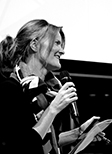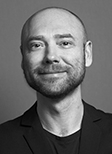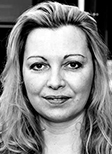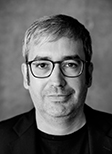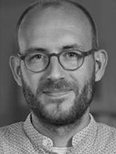Mini-symposia
Mini Symposia explores novel experimental topics that fall outside the general conference themes. Each mini symposia is formulated by expert researchers and gathers key contributions on the symposia theme in up to 5 sub-session of up to 6 speakers. All interested authors are entitled to propose a mini-symposia and to submit contributions to the mini symposia for review.
BIO DESIGN: NEW MATERIAL PRACTICES FOR A SUSTAINABLE BUILDING CULTURE
|
|
Paul NicholasCentre for IT & Architecture |
Carole ColletDesign & Living Systems |
|
This panel examines how bio-based materials – materials that arise from the biosphere of abundant, renewable, non-toxic, biodegradable and chemically versatile materials - have the potential to fundamentally change the impact of building practice on our planetary boundaries. To ensure a sustainable future it is imperative that we rethink the material cultures of architecture and the built environment. As global construction activity accelerates, we need to question what materials are and how we work with them. Bio-design agendas challenge a modernist perception of resource as infinite and available without consequence, to an ecological understanding of resource as a shared global reserve to be balanced between the needs of the environment and that of humanity. The panel asks what are the emergent practices of bio-design and what methods of description can represent their inherent complexity and behaviours by positioning three key perspectives:
-
Bio-design as grown materials: new use of materials such as mycelia-, organic cellulose- and algae-based materials allow to reconsider how we can grow structurally performing materials and harvest them for the built environment
-
Bio-design as composed materials: bio-based polymers such as agar, starch and chitin allow us to consider ecologically sound alternatives to petroleum-based polymers. Their different strength-ratios and durability challenge our perceptions of performance and necessitate new use cases
-
Bio-design as living materials: synthetic biology offers new perspectives in our relation to the living allowing us to re-programme the performance of living organisms. We question what is the nature of a living architecture and how can it co-exist in sym-poetic relationships with human inhabitation?
Materiality in Architecture and Building Design
|
Olga Popovic LarsenInstitute of Architecture and Technology |
Markus Matthias HudertDepartment of Engineering |
The presentations in this session explore the role of materiality in architecture and building design. In particular, they highlight projects that address different types of materials and notions of materiality – including natural and bio-composites, fiber-reinforced composites, waste materials as a new resource, metamaterials, sound, and others – and how they relate to architectural values as well as the quality of buildings and that of the built environment. Materials used in buildings are often man-made and almost always processed, and that not only since the invention of reinforced concrete and steel. With metamaterials, new possibilities for the design of materials and material properties emerge. These opportunities for configuring and re-configuring become even more relevant within the current debate on environmental issues. Until recently, building materials have primarily been chosen based on their mechanical qualities, economic criteria, and with regard to their aesthetic and culturally associated values. Today, we are far more concerned with their impact on the environment and the health of inhabitants. Together with computational design and assessment tools, the key to a novel and more sustainable building culture might lie in a new understanding and use of materials.
1:1, tools and programs – structures and construction in architecture education
|
Mario RinkeUniversity of Antwerp, Faculty of Design Sciences |
MARIa VrontissiUniversity of Thessaly, Department of Architecture |
Teaching structures and construction is a crucial component of architecture education. Different educational traditions, fundamentally different teaching cultures or differences in study programs already account for a variety of concepts for teaching these fundamental technical aspects. Moreover, new digital technologies and comprehensive discussions on the sustainable use of construction materials have substantially driven changes in teaching concepts at different levels at many architecture schools already. Interestingly, on the one hand, there seems to be a need for a teaching equivalent on the technical side for the proclaimed future of digital architecture using digital modelling techniques, optimisation and parametric design studies, or 3D printing. On the other hand, the digital push has simultaneously stimulated the curiosity and necessity to teach material and construction basics as well as structural principles physically in dedicated workshops. Collecting various experiences from all ends of new educational approaches will support the teaching community in making better decisions for their courses and programs and encourage new, experimental projects to rethink teaching methods for technical aspects in architecture education. This mini-symposium, therefore, provides a platform for advancements in structural and constructional courses and reflects the cross-disciplinarity rising in practice and research, and research-driven education. Instead of documenting best-practices and long-established approaches, interested authors are encouraged to share experiences of experimental, unconventional, cross-disciplinary, 'outside the box' teaching. Asking how new means should be used, what else is needed, how a sustainable design thinking can be naturally implemented, and 'where do we go from here?', the mini-symposium focusses on three main areas:
MAKING: Full-scale design & build workshops
SIMULATING: Forces and matter in digital architecture
FRAMING: Implementing structures and construction in an architecture curriculum for today and tomorrow


